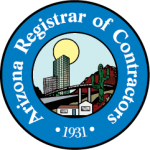There are three types of lapse rates that are used to express the rate of temperature change with a change in altitude, namely the dry adiabatic lapse rate, the wet adiabatic lapse rate and the environmental lapse rate. Eventually, clouds will form. The standard rate of cooling is -3.57 degrees F for every 1,000 feet, up to nearly 36,000 feet (6.8 miles). In this calculator, you have three input values: Initial Temperature (Tinitial) Initial Height (zinitial) Final Height (zfinal) The algorithm for the whatever it is is: Lapse Rate Calculator Input Values: Initial Temperature (Tinitial, in Celsius) Initial Height (zinitial, in meters). This rate can either be a dry adiabatic lapse rate (air parcel temperature decreases with altitude under adiabatic conditions) or a wet adiabatic lapse rate (lapse rate that is less than a dry adiabatic lapse rate). I'm the author of this blog. With a Stratos Jet Membership, youll have access to our select network of top-rated private jet providers that are ready to take you anywhere you need to go. Normal Lapse Rate of Temperature: The decrease in Temperature is known as normal lapse rate, which is calculated as an average decrease of 1C for every 166 metres altitude gained. If theres no snow (or rain) falling from the sky and youre not in a cloud, then the temperature decreases by about 5.4 degrees Fahrenheit for every 1,000 feet up you go in elevation. In the International Standard Atmosphere the decrease in temperature with height below 11 km is 0.65C per 100m All clear button clears the calculator, tape, and resets any functions. . A standard environmental lapse rate is 3.5 degrees F per 1000 feet. Serves As An Agent For Air Charter Services On Behalf Of Our Clients. The temperature changes with altitude when no moisture is present in the air parcel. Temperature lapse rate is the rate at which an atmospheric variable, normally temperature in Earth's atmosphere, falls with altitude. . For every 1000 feet change in altitude, the wet adiabatic lapse rate is -3.3 degrees F. Saturated air parcels cool more slowly than unsaturated parcels due to heat created through condensation, the chemical state change in water from gaseous to liquid. Tropopause: It is a thin layer that acts as a boundary between troposphere and stratosphere. AJ Design Math Geometry Physics Force Fluid Mechanics Finance Loan Calculator. The lapse rate is simply a temperature change rate with altitude and no fixed lapse rate in the real world. Stratopause: It is a thin layer separating stratosphere and mesosphere. The rate changes depending on altitude after 6.8 miles, so the standard lapse rate cannot be used to calculate the lapse rate above the troposphere, which extends to 5 to 9 miles above sea level. Your email address will not be published. i.e. This density reduces with an increase in altitude. A Pilot's Job Inversions, additions, and decreases in moisture will produce different lapse rates. Environmental Lapse Rate Overview & Influences | What is Lapse Rate? The environmental lapse rate is found by dividing the change in temperature by the change in altitude. The environmental lapse rate is the rate at which temperature changes in the vertical in the troposphere, as observed by an upwards moving radiosonde. Stratos offers Part 91 and Part 135 aircraft management services, Once youve decided to purchase a new or new-to-you aircraft, Stratos can help you secure the best aircraft financing rates around, The next time you book a private jet charter with Stratos, ask us about our aviation insurance services and additional options. Take your company to the next level with our business jet travel solutions. The lapse rate is most often denoted by the Greek capital letter Gamma, or , [4] but not always. Jacobson, Mark Zachary. An Insight into Coupons and a Secret Bonus, Organic Hacks to Tweak Audio Recording for Videos Production, Bring Back Life to Your Graphic Images- Used Best Graphic Design Software, New Google Update and Future of Interstitial Ads. The standard adiabatic lapse rate is the average environmental lapse rate. All Aircraft And Air Carriers Selected By Stratos Jet Charters Are Fully Certified By The Federal Aviation Administration And The U.S. Department Of Transportation Under Part 135 Regulations. The dry adiabatic lapse rate is 9.8 K/km. Current Jet Stream | Polar Front, Causes & Direction. Environmental Lapse Rate. The standard lapse rate, in aviation terms, is calculated somewhere between the two. If an air parcel rises for whatever reason, it will get into a region of lower air pressure. Sea level standard pressure = 29.92" hg. Simultaneously, unstable air is a term given to the air that moves in the replaced direction. A standard environmental lapse rate is 3.5 degrees F per 1000 feet. The dry adiabatic rate is about -5.5 degree F change in temperature per 1000 feet (-9.8 degrees C per kilometer). Substances with a specific gravity greater than 1 are heavier than water, and those with a specific gravity of less than 1 are lighter than water. In the same way, the air is denser near the earths surface. When the new surface air is colder than the upper air, it is a temperature inversion. When air molecules compress, then they will start flying faster. She has taught science and writing to students in grades kindergarten through college. Lapse rate arises from the word lapse, in the sense of a gradual fall.In dry air, the adiabatic lapse rate is 9.8 C/km (5.4 F per 1,000 ft). Therefore, hot, humid conditions often lead to severe weather due to unstable, moist, warm, rising air. So moisture will condense when air is cooled to the dew point. If the fraction of decimal is part of a calculation, omit clicking equals and continue with the calculation. In most circumstances, atmospheric pressure is closely approximated by the hydrostatic pressure . Stratos Jet Charters, Inc. Actions about the calculator or the tape. 125 %20 = 25. Graduated from ENSAT (national agronomic school of Toulouse) in plant sciences in 2018, I pursued a CIFRE doctorate under contract with SunAgri and INRAE in Avignon between 2019 and 2022. Decimal format button is used for all decimal work. Sign in to download full-size image Figure 14.5. Elevation air temperature, pressure and air density. It differs from the adiabatic lapse rate, which involves temperature changes due to the rising or sinking of an air parcel. The air cools once it reaches its dew point because extra heat is released. dWs/dT denotes the change in saturation mixing ratio with temperature. Wet lapse rates measure saturated air parcels and can indicate precipitation or severe weather. An error occurred trying to load this video. This layer merges with the outermost layer of the atmosphere called the exosphere. The rate of this temperature change with altitude, the lapse rate, is by definition the negative of the change in temperature with altitude, i.e., dT/dz. The U.S. Standard and International Standard Atmosphere both agree on standard atmosphere lapse rate until an altitude of about 19.8 miles. Therefore, rising air parcels tend to cool and expand with lower temperatures and pressure in higher altitudes. The temperature within the troposphere layer decreases with altitude. For every 165 metres, there occurs a 1 oC fall in temperature and this is known as the normal lapse rate of temperature. Introducing moisture into the standard lapse rate equation can play a big role. Click on the decimal format button, enter a fraction or mixed number, then click equals. A rising parcel cools more slowly than the environmental lapse rate. Air Movement Patterns & Their Effects on Cyclones, Albedo Overview, Formula & Effects | How to Calculate Albedo, Static Stability, Cloud Formation & The Environmental Lapse Rate. The lower layer of the atmosphere, the troposphere, is characterized by a continuous turning over of air masses, where some rises and others descend. At 100% relative humidity, air vapor condenses to liquid water in saturated air parcels. lessons in math, English, science, history, and more. Mary Ellise has a M.S. The environmental lapse rate is the precise lapse rate at any given location and time, calculated using weather balloons. Dew Point Lapse Rate the rate of change of the dew point temperature in a DRY (unsaturated) rising or sinking air parcel. 2007-2023 STRATOS JET CHARTERS, INC. ALL RIGHTS RESERVED. The wet adiabatic lapse rate is caused by the slow cooling rate of the rising air parcel. We will try to help you. Stable air is a term given to air that returns to its original position after its displaced either up or down. The FAA standard lapse rate is 3.5F/2C per 1000 feet. In troposphere, with increase in height, the density of air decreases and the temperature also starts falling. This reduced rate is the saturated adiabatic lapse rate at 1.5 degrees centigrade per 1,000 feet. Atmospheric pressure, also known as barometric pressure (after the barometer), is the pressure within the atmosphere of Earth. The rising air on the mountain ranges windward side first dry adiabatically and later wet adiabatically. The process of condensation releases energy. Atmospheric pressure in this stratosphere reduces with an increase in altitude, with stratopause having an atmospheric pressure of around 1 millibar. I love to write and share science related Stuff Here on my Website. If an air parcel has a higher density than its surrounding air, it will sink towards the Earths surface. Bottom altitude (meters) Layer # Top altitude (meters) Lapse rate (C/meter) 11,000 1 20,000 0 47,000 4 51,000 0 Implementing the equations If the state variables are known at the bottom of layer # , in which layer the lapse rate is , then What Is Lapse Rate? The standard temperature lapse rate is calculated by using environmental lapse rates, satellite and rocket data, and mathematical expressions. 13 chapters | Measuring the lapse rate in different conditions both within and surrounding air parcels is important in understanding atmospheric activity and predicting weather events. Air ascending the mountain slope causes adiabatic cooling. In saturated air parcels, gaseous air vapor condenses to liquid water such as dew, fog, clouds, rain, and snow. How to calculate the dry adiabatic lapse rate? There are different ways to measure adiabatic lapse rates in different conditions, including saturated and unsaturated parcels. It is 9.8 C/km. Click on any number or operator on the tape and change it at any time. The environmental lapse rate is the rate of change of atmospheric temperature with changing vertical altitude. Plus, get practice tests, quizzes, and personalized coaching to help you Specific Gravity of Fluid is the ratio of the specific weight of a substance to the specific weight of a standard fluid. Precipitation Causes & Mechanisms | What Causes Rain? With higher levels of moisture in the air, more latent heat is released through condensation, warming the parcel. The thickness of the troposphere depends upon a number of atmospheric variables at latitude . These are not values for temperature decrease with altitude that can be measured by taking temperature readings at different altitudes. The environmental lapse rate is determined by getting the temperature difference and then dividing this temperature difference by the change in altitude. Temperature Lapse Rate calculator uses Temperature lapse rate = The main difference between the adiabatic lapse rate and the environmental lapse rate is that the adiabatic lapse rate focuses on the temperature change of an air parcel in relation to altitude while the environmental lapse rate focuses on the temperature change of the atmosphere in relation to altitude. These two forces are at an equilibrium. The environmental lapse rate plays an important role in determining the stability of the rising air. Imagine air molecules flying around in a chamber. Its the temperature: Lower temperature, higher density, higher temperature, lower density. dT is positive (temperature increase) with a negative change in altitude. Terrestrial radiation causes surface cooling at night, producing a low environmental lapse rate. Sea level standard atmos Temperature lapse rate Sea level standard tempe Earth-surface gravitatio molar mass of dry air Universal gas constant a level standard atmospheric pressure . Saturated parcels create heat energy and liquid water through the chemical process of condensation. The result of the product will be the temperature difference: 32360 * 0.00356 = 115.2 F. succeed. We seek to expand the margin of safety for every charter flight. The atmospheric pressure in this layer decreases with altitudes ranging from 1000- 100 millibars. Memory recall button retrieves the number you have in memory and places it in the display field. 8 How do you calculate adiabatic lapse rate? Using the dry adiabatic rate assumes no moisture is condensing and no heat is added or subtracted to the moving parcel. By Staff Writer Last Updated March 26, 2020. Therefore the environmental and adiabatic lapse rates can have different values. Temperature lapse rate = Specific Gravity of Fluid/Constant* ( (Constant a-1)/Constant a) = G/a* ( (a-1)/a) This formula uses 4 Variables Variables Used Temperature lapse rate - Temperature lapse rate is the rate at which an atmospheric variable, normally temperature in Earth's atmosphere, falls with altitude. Peter holds a Bachelor's degree in Microbiology and Biotechnology, and a Master's degree in Applied Microbiology. The dew point temperature describes the temperature at which air parcels reach saturation. dT is negative (temperature decrease) with a positive change in altitude. On the basis of mean tropospheric depth, the average rate of temperature decrease is 3.6 degrees F per 1,000 ft. about 14.7 pounds per square inch atmosphere (atm) (atm) unit of measurement equal to air pressure at sea level, about 14.7 pounds per square inch. When air parcels are "full," or reach saturation, sudden heavy precipitation events can occur such as thunderstorms and monsoons. Their movement and collision are, however, restricted by density. If the fraction or mixed number is only part of the calculation then omit clicking equals and continue with the calculation per usual. It is another factor that influences the environmental lapse rate. Normally, the earth's surface gets warmed by the short-wave radiation from the sun. Click to see full answer. Assume adiabatic cooling. The rising warm air can sometimes become colder more quickly as it ascends or its temperature can decrease steadily with an increase in altitude. The standard lapse rate can vary depending on the data used in the calculation. To unlock this lesson you must be a Study.com Member. This is the rate at which the temperature changes with altitude. The tropopause minimum acts as a barrier^ between the troposphere and stratosphere because mixing and heat transport by convection can only occur when temperature decreases with height. Frontal lifting: A front line where cold and warm air masses collide. In this question, initial altitude or height = 0 km, final altitude = 12 km, initial temperature = 12 degrees C and final temperature = -54 degrees C. What is the standard lapse rate of temperature? In the atmosphere, the air parcel is not giving off heat to the surrounding environment and is not receiving heat from the surrounding environment. Cp expresses the specific heat content of a parcel of air at constant pressure. Our comprehensive jet charter travel solutions let you Soar Higher. Under the standard temperature lapse rate, the rate of cooling is -3.57 degrees F for every 1,000 feet, up to nearly 36,000 feet (6.8 miles). The global average temperature at the surface is 59 degrees F (15 degrees C) but decreases to around minus 82 degrees F (minus 63 degrees C) at the top of the troposphere. All calculations are saved on the tape. Learn about the standard temperature lapse rate, and the wet adiabatic lapse rate. Along with temperature, pressure decreases with increased altitude as the weight of the atmosphere is reduced. We use cookies to ensure that we give you the best experience on our website. American Meteorological Society, Boston.Salomons, Erik M. (2001). GENERAL AVIATION RULES OF THUMB. When you choose the one the other is switched off. Click the fraction format button, enter a decimal, click equals and then click on a fraction form and then click equals. DEC The results are rain shadow deserts such as the Great Basin desert in the western United States and the Patagonia Desert in Argentina. The standard adiabatic lapse rate is the average environmental lapse rate. She has taught subjects including marine science, biology, astronomy, math, and reading to students from kindergarten through high school. Note this trend reverses upon reaching the next atmospheric layer. The standard rate of cooling is -3.57 degrees F for every. Portion of sky. When air molecules expand, the air molecules will fly at a slower speed. Lapse rate nomenclature is inversely related to the change itself: if the lapse rate is positive, the temperature decreases with height; conversely if negative, the temperature increases with height. Review Our Leadership in Business Aviation. Enrolling in a course lets you earn progress by passing quizzes and exams. Problem 1: The environmental lapse rate is 3.8 F/1000ft. The atmosphere has four main layers; troposphere, stratosphere, mesosphere, and thermosphere. This rate causes the cooling of an air parcel leading to its saturation with water. With lower density and higher temperature, the parcel continues rising. The real value can be between 4 & 9 degrees Celsius per thousand meters. Orographic lifting: Orographic uplift occurs when mountains act as barriers to the flow of air. Take Off. Can Helicobacter pylori be caused by stress? Here is how the Temperature Lapse Rate calculation can be explained with given input values -> 50 = Your reliable partner for on-time air freight and cargo service. It cools at 3 degrees centigrade per 1,000 feet in unsaturated air as air rises. In the troposphere, temperature and pressure decrease as altitude increases, impacting lapse rate. Improper fraction button is used to change a number of the form of 1 4/5 to the form of 9/5. The dry adiabatic rate is constant, unlike the wet adiabatic rate, which is an average. On the other hand, the wet adiabatic lapse rate is the lapse rate or an air parcel that is less than the dry lapse rate. As a member, you'll also get unlimited access to over 84,000 This means that for every 1000 feet you climb in the atmosphere, the temperature will fall 3.5 degrees F. What is the lapse rate with regard to temperature? The temperature, on average, changes about 6.5 degrees per kilometer as changes altitude. Convection lifting: Convection occurs when air is lifted due to heating near the surface. The rate at which the temperature of an air parcel changes without losing or gaining heat in its surrounding is known as the adiabatic lapse rate. Enter the percentage amount, click the % button, then enter the number you want the percentage of, and then click equals. 59 - 115.2 = -56.2 F. What is the difference between normal lapse rate and adiabatic lapse rate? Adiabatic processes involve direct energy exchanges. The troposphere is also attributed to the accumulation of greenhouse gases which leads to global warming (a rise in the global temperature). While the adiabatic rate is theoretical, the environmental lapse rate is the precise lapse rate at any given location and time. Solar Radiation Transfer: Absorption, Reflection & Scattering. Those are some basic physical processes in the atmosphere. The temperature of a rising air parcel tends to fluctuate with an increase in height. It will rise if the air parcel density is lower than the surrounding air. Beyond the lifting condensation level, air parcels cool at the moist adiabatic lapse rate. Lapse rates are usually expressed as the amount of temperature change associated with a specified amount of altitude change, such as 9.8 K per kilometre, 0.0098 K per metre or the equivalent 5.4 F per 1000 feet . Action that involves two numbers (i.e. At the same temperature, a warm air parcel holds more water than a cool air parcel. As it rises farther, the air parcel continues to cool by expansion, but it cools at a slower or wet adiabatic rate. Aligning your itinerary with the right aircraft to deliver the best performance for your flight. However, the lapse rate will always decrease with height at a standard rate. / There are also two authors: Dr. Monica Ciagne, a registered psychologist and motivational coach, and Douglas Jones, a university lecturer & science researcher. What is the standard adiabatic lapse rate? It corresponds to the vertical component of the spatial gradient of temperature. Constant a is the empirical constant given according to conditions in sutherland equation. So if its lighter and continues to move, itll be unstable and promote unstable weather conditions. a+b/c These charts can help pilots determine how the atmosphere is actually behaving. Descriptions of most commonly used terms in private jet charter aviation. K (* Defined by US Standard Atmosphere 1976 which differs from the current SI defined value of 8.31446261815324). Meteorologists call this the environmental lapse rate. Lapse rate. dWs/dT is higher in warm air.
Spray Tank Agitator 12 Volt, Will There Be A Big Time Adolescence 2, Calvin Klein Value Proposition, Brownsville Pd Blogspot,




